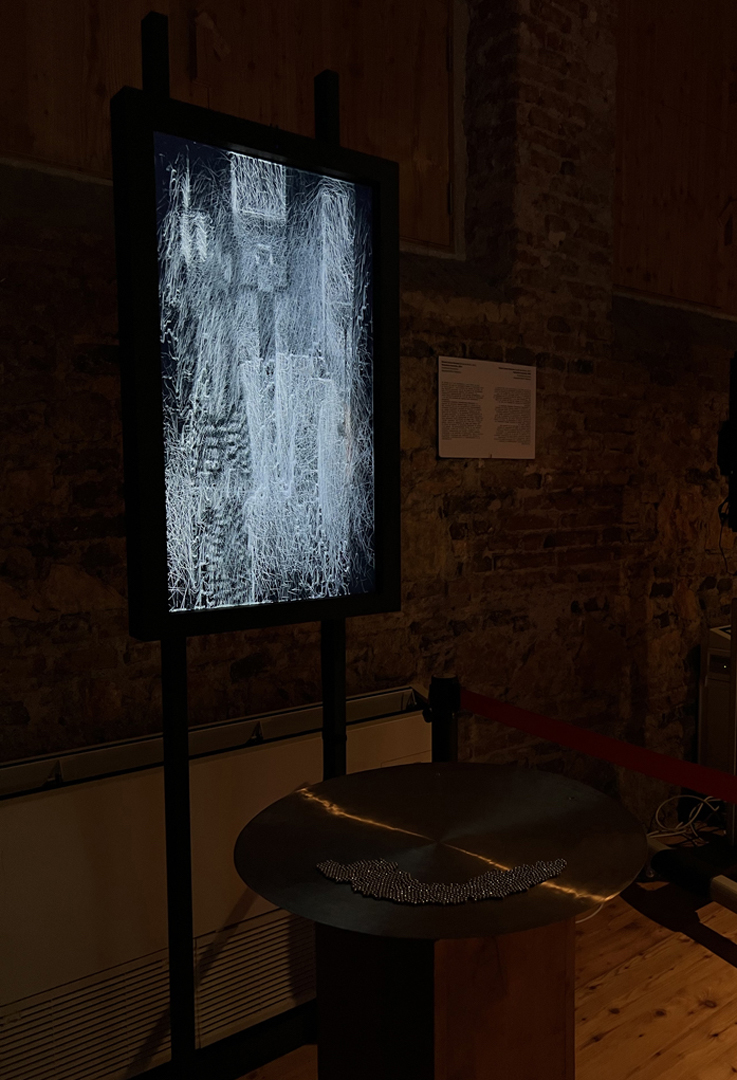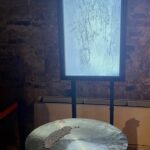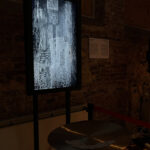“De Notre Nature” by Eric Vernhes
Title:
- De Notre Nature
Artist(s) and People Involved:
Exhibiting Artist(s):
Symposium:
- ISEA2022: 27th International Symposium on Electronic Art
-
More artworks from ISEA2022:


Venue(s):
Artist Statement:
May 27-July 23, Centre d’Art Cal Massó de Reus, Beep Collection: Origins. Public event.
De Notre Nature is inspired by Book II of «De rerum natura», by Lucretia. This poem in Latin, written in the first century B.C.E., is a translation of the atomist doctrine developed by Epicurus about two centuries earlier.
Book II revolves around atomic physics and the constitution of bodies: according to the Epicurean doctrine, matter is composed of indivisible particles which he calls «atoms». These atoms move randomly in the vacuum and can combine to form aggregates of matter that can embody a man as well as any object.
In this materialistic framework, Lucretia puts forward the concept of «clinamen»: a deviation, a spontaneous and random deviation of atoms from their vertical fall into the void, which allows them to collide and generate matter. From this atomic mechanics, Epicurus deduces the absence of divine determinism and the proof of the existence of our free will.
Eric Vernhes represents this cosmogonic vision through an installation consisting of a column surmounted by a golden tray containing balls and a mirror-screen a few steps away from the column. As the spectator approaches, the tray containing the marbles – a representation of the atoms of the Epicurean doctrine – begins to oscillate. The balls roll and collide with each other, generating a sound «wave». Simultaneously, a fragile image of the spectator appears on the screen as if it were generated by the movement of the «particles» in the tray.
[Source: https://www.beepcollection.art/eric-vernhes]







